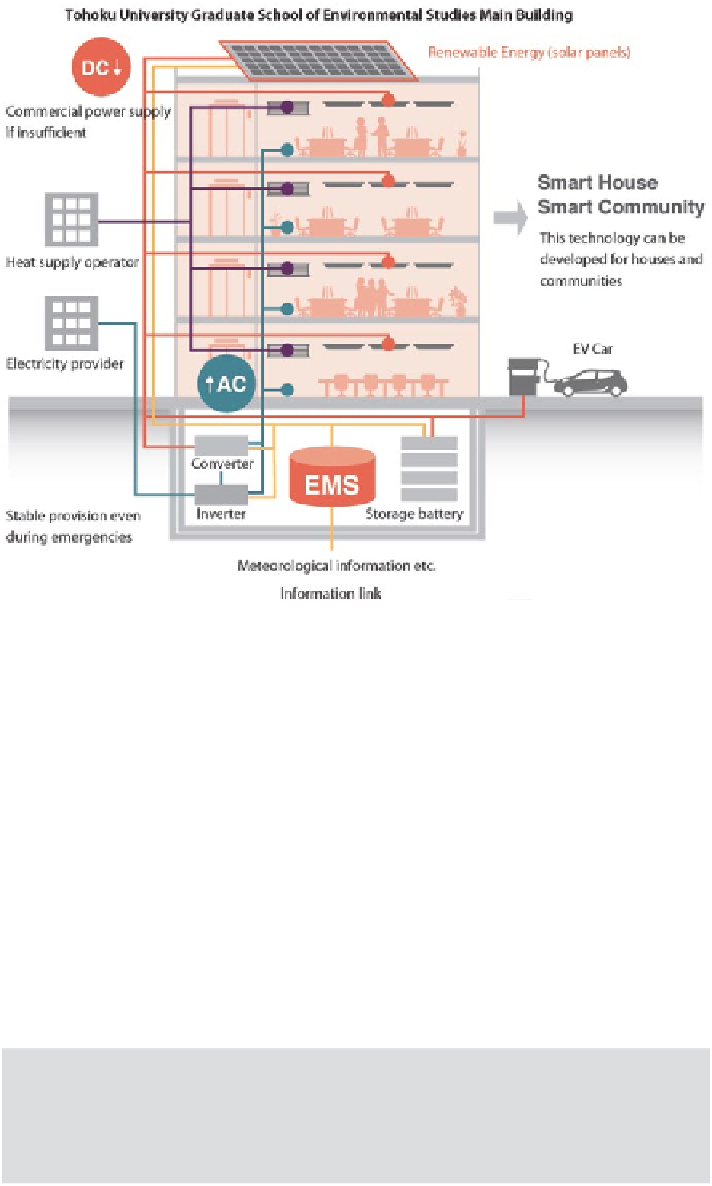Environmental Engineering Reference
In-Depth Information
Fig. 7.7
Smart building configuration for the main building. (GSES
2012
)
• Enhancement of IT functions by the various sensors and the control software.
• Combining the energy system of a stationary smart building/house with energy
transfer applications such as electric vehicles (EV).
The experience of the Great East Japan Earthquake of March 11, 2011 and the sub-
sequent accident at the Fukushima Daiichi nuclear power plant is at the root of these
technological developments.
The adjoining 'Ecollab.' building was the forerunner of the main building con-
figuration at a scale of about 1/10. It has a number of additional design features to
minimize energy demand (Box 7.1) and also an experimental area for developing
DC applications in kitchen and other household appliances- developing a DC life-
style. (Fig.
7.3
) 'Ecollab.' also deploys energy conservation methods in addition to
the DC/AC hybrid control systems and provides a laboratory building with envi-
ronmentally conscious, living quarters and lecture rooms for faculty and students.
Box 7.1
Special Energy-Saving Design Features of the 'Ecollab.' (GSES
2011
)
The 'Ecollab.' was designed to use sustainable materials and also designed to
minimise energy consumption by maximising naturally available ventilation

